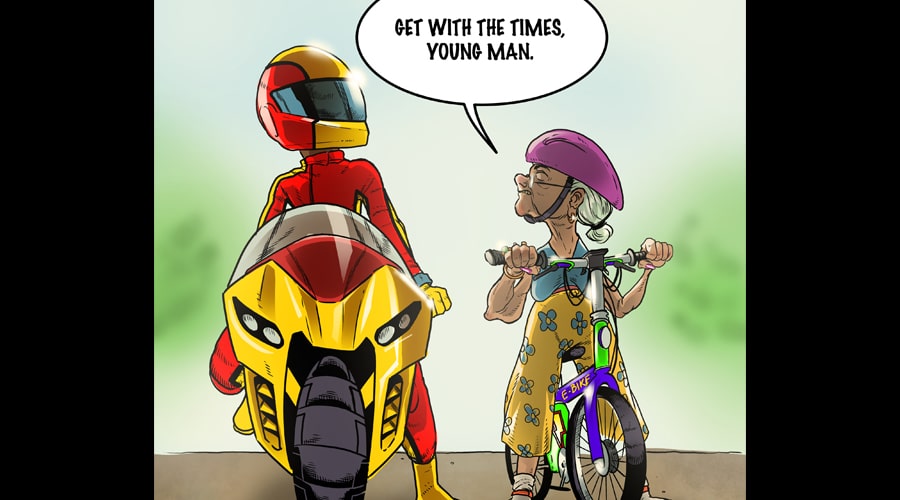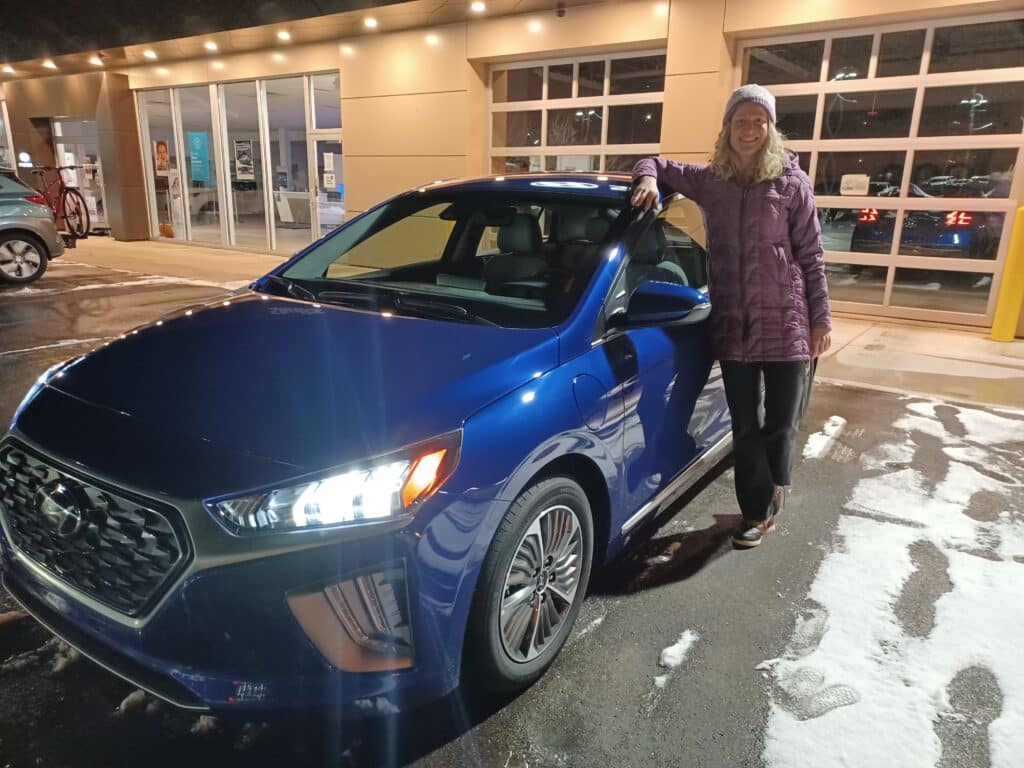Public transit has taken a huge hit from the coronavirus pandemic. Subway and bus ridership are way down, and, in a true sign of the times, some New Yorkers are buying cars for the first time ever. Ride-sharing services are also suffering. Until we can figure out how to use mass transit safely (here are some strategies to get you started), most of us (if we have the choice) will opt for driving. But “carmageddon” doesn’t have to be our fate. In addition to biking and walking, other low-carbon transport modes like electric vehicles (EVs) and micromobility solutions such as e-bikes and scooters are all great options.
By most accounts, biking and walking have been the real winners in the COVID-19 era, offering the perfect combination of “social” and “distancing.” Bike sales have exploded in Europe and across the U.S., with cycling shops from Phoenix to Washington, D.C. reporting sales well above previous levels. In a country better known for its car culture, Americans are buying bikes (including e-bikes) by the droves and—surprise!—enjoying the physical and mental health benefits. In an April survey, bicycle manufacturer Trek found that 21 percent of bike owners planned to ride more during COVID times, while 50 percent said they’d keep riding after the pandemic subsides.

Even more importantly (for our planet and overall health), bicycle commuting is growing, as bikes are seen as a safer alternative to public transit. During lockdown, many cities closed streets to cars or created “corona cycleways,” in some cases making the changes permanent (as in Seattle) to alleviate pollution and encourage biking and walking. In New York, where fewer than 1 percent of commuters travel by bike, these unprecedented times are changing mindsets. “We are absolutely confident we are going to see more bike commuting in the months ahead,” said Polly Trottenberg, New York City’s transportation commissioner. “We are already seeing people who hadn’t biked before are trying it for the first time. We are going to see a lot more of that as the city starts to come back to life.”
In the Netherlands, research shows that commuters who use bike transit—short-term public bicycle rentals that enable them to pedal the “first and last miles” to more central train or bus stations—arrive at their destinations in the same amount of time as driving. In New York, where bike-sharing and ride-sharing services have already eaten into subway ridership in recent years, COVID has merely accelerated the shift in how people get around. “A change that was going to take five to 10 years has basically taken place overnight,” noted Tom Wright, president of the Regional Plan Association.
“A change that was going to take five to 10 years has basically taken place overnight.”
On-demand “micromobility“ options like electric scooters, e-bikes, and (electric) microtransit shuttle services, which have fewer infection risks than mass transit, are also on the rise. As long as strict health and safety protocols can be put in place (disinfection of vehicles, etc.), these electrified options will continue to supplant public transport in some cases, offering an appealing solution for short-distance travel or as feeders to larger transit hubs.
Then, of course, there are electric cars. Despite a COVID-induced decline in car sales overall, the automotive industry continues to see EVs as the future. As we all know by now, a superior product (in this case a superior driving experience, lower total cost of ownership, zero tailpipe emissions, and more)—can be slowed but not stopped. Passenger EV sales reached 2.1 million last year, and by 2022, more than 500 different EV models are expected to be available globally. Already, EVs are displacing 1 million barrels of oil demand per day, helping to keep our skies clearer.

Combined, these transportation trends—a rekindled enthusiasm for walking and cycling, cleaner vehicles, and safer (eventually) public transit—are all elements of a new mobility landscape. Key to making this landscape sustainable is multi-modality, or making all of the transport modes (bikes, cars, and scooters, as well as public transport) work with each other. Long term, the world is moving away from personal, driver-driven vehicles and toward seamless multimodal travel enabled by electrification, driverless vehicles, and shared mobility (a trend that’s happening faster in Asia and Europe than the U.S.). Mobile apps and autonomous vehicles will further reduce our need for private vehicles.
Ultimately, the transport system that emerges from the COVID-19 crisis hinges critically on the decisions we make collectively—and individually—over the coming months. Do we resume our old ways, or do we embrace new approaches that bring us closer to the new mobility landscape? At the systemic level, a key step would be to push for greater support for electrified mobility in the next federal stimulus bill, both to help with the U.S. economic recovery and to boost the country’s long-term resilience. Like any major crisis, the current pandemic offers opportunities for us to reimagine and reshape the world in which we want to live—so let’s make the smartest choices possible.
Originally published in the 7/15/20 edition of our Flip the Script newsletter















